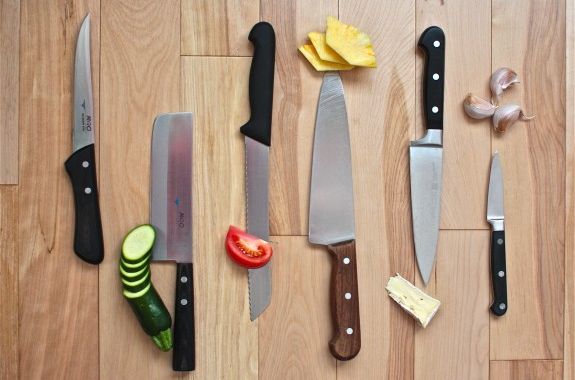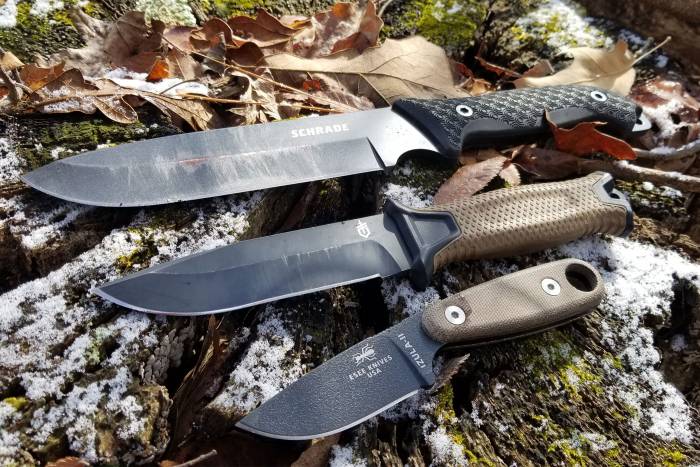Know what makes a good knife before buying one for cooking, camping, or daily use. Quality knives are safe, precise, and durable. This tutorial covers everything from blade material to handle design to produce a decent knife. Let’s learn how to pick the right blade!
What Makes a Good Knife

Good knives have various distinguishing traits. Let’s examine what makes a good knife:
Sharpness/Edge Retention
Sharp knives make cutting and slicing easy. Good knives have sharp edges that stay sharp after usage. Premium blade materials resist dulling, assuring edge retention.
Blade Construction
Blade material affects knife performance and durability. Ceramic, steel, and carbon steel are popular. Maintenance-free stainless steel blades prevent corrosion. Carbon steel blades, however, are sharp and durable. Lightweight and stain-resistant ceramic blades are popular.
Ergonomic Handles
A decent knife needs an ergonomic handle. The handle should be secure to prevent mishaps. Wood, synthetic composites, and stainless steel are handle materials. Durability, moisture resistance, and grip enhancement vary by material.
Weight Distribution
Knife balance and weight affect utility and manoeuvrability. A well-balanced knife improves control and decreases wrist strain. The knife’s weight should also be appropriate. Lighter blades are better for precision work, whereas heavier knives are better for rough cutting.
Flexibility and Use
Good knives are multipurpose. A versatile knife lets you cut veggies, fish, and meat without switching blades. Choose a knife with an adaptable blade shape and length.
Choosing the Right Knife for Your Needs

Now that we know what makes a good knife, let’s learn how to choose one for your needs:
Knife Skills: Cooking
Chefs love fine knives. Cooking knives:
Chef Knife
The kitchen’s workhorse, the chef’s knife, can cut almost anything. It slices, dices, and chops items with its broad blade and curved edge.
Paring Knife
Precise cutting, peeling, and trimming require a paring knife. Its compact size and sharp blade allow precise work with fruits, vegetables, and herbs.
Bread Knife
Serrated bread knives cut crusty bread and delicate pastries easily. Its large, serrated blade slices bread cleanly.
Outdoor Knives: Adventure

A good outdoor knife is crucial when camping. Outdoor knives:
Fixed-Blade Knife
Outdoorsmen use fixed-blade knives. Camping, hiking, and survival are great for its sturdy construction and full tang. It can trim branches, cook, and defend yourself.
Folding Knife
Outdoor activities favour folding knives due to their portability. It folds for safe storage and portability. Folding knives are handy for opening goods, cutting ropes, and other campground jobs.
Hunting Knife
Field dressing and processing game requires a hunting knife. These knives have sharp drop point blades and strong spines. They perform precise skinning, gutting, and other hunting procedures.
Everyday Carry Knives: Convenience and Practicality

A multipurpose knife is useful for daily chores. Popular EDC knives:
Pocket Knife
A pocket knife can fit in your pocket or backpack. Multiple blades, screwdrivers, bottle openers, and scissors are common. Pocket knives are useful for opening goods, cutting cords, and even screwdriving.
Multitool
Multitools are ideal if you require more than a knife. Knives, pliers, screwdrivers, saws, and more come in multitools. They’re adaptable and useful for home, work, and outdoors.
Knife FAQs
What are stainless steel blade benefits?
Easy-to-maintain stainless steel blades resist corrosion. They have good durability and a variety of hardness levels for cutting applications.
Ceramic blades for everything?
Ceramic blades are ideal for slicing fruits, vegetables, and boneless meats. They are not suitable for heavy-duty operations or cutting hard materials.
How can I grip a knife handle?
Look for ergonomic handles with textured synthetics or rubber grips. Some knives have finger grooves or bolsters for comfort and control.
How should I pick a hunting knife?
Consider blade shape, length, and material when buying a hunting knife. The blade shape and handle material should be ideal for skinning and field dressing.
Knife carry laws?
Know your local knife carry laws. Some localities restrict blade length or knife kinds. Avoid legal troubles by following local laws.
Knife sharpening: how often?
Knife usage determines sharpening frequency. If your knife is dull or cuts poorly, sharpen it. Maintenance and honing can extend sharpening intervals.
Conclusion
Choose a decent knife carefully. Knowing what makes a knife great—sharpness, blade material, handle design, balance, and versatility—will help you choose the best one for your needs.
Whether you’re a chef, outdoorsman, or require a trustworthy everyday carry knife, the right blade is out there. Use this guide’s FAQs and advice to choose a knife. So get the best tool and start your cutting-edge adventures!
